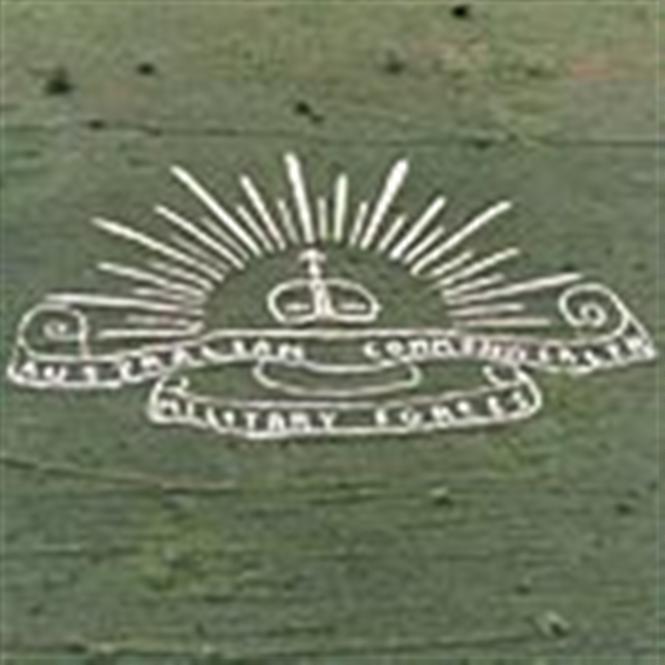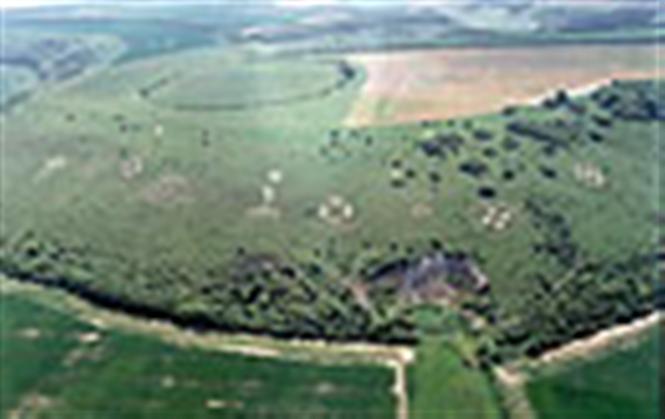Fovant Badges
Description
First World War military crests engraved into the chalk hillside. The size varies - the Australian Badge, the largest, measures 51m x 32m, which is just under half the area of a football field.
History
During the First World War the village of Fovant, in Wiltshire, and its neighbours, Compton Chamberlayne and Sutton Mandeville, were the main camp sites for Commonwealth troops heading into and coming from the front lines of northern France. These villages and fields were next to chalk downs which covered the area. In remembrance of their colleagues who died in France, many of the regiments staying in the area carved into the chalk hillsides replicas of their cap badges. By the end of the First World War there were some twenty discernible badges, the largest of which was the Australian Commonwealth Military Forces Badge.
Local workers from Fovant and the surrounding villages, supported by Regimental Associations, maintained the Badges after the First World War. During the Second World War the badges were left to overgrow in order to disguise landmarks which might assist enemy aircraft. After the end of the Second World War, the Fovant Home Guard platoons formed themselves into an Old Comrades Association and undertook the task of restoration.
In 1961, the Old Comrades Association was reformed as the Fovant Badges Society. The Society became a charitable organisation and in 1994 adopted a new constitution which governs its operation and objectives; these are the preservation and maintenance of the Regimental Crests cut on the chalk downs.
By 2000, there were only twelve discernable badges on the downs. The Fovant Badge Society has ensured the lasting protection of the Badges by successfully petitioning English Heritage to have the Badges scheduled as Ancient Monuments. Scheduling was granted in 2001 by the Department of Culture, Media and Sport, placing all twelve badges, including those not being restored, under the protection of the government.
Construction Information
Many of the regiments staying in the area of Fovant, in Wiltshire, carved into the chalk hillsides replicas of their cap badges.
There is a large map of Australia at Hurdcott Camp (Compton Chamberlayne) and a badge of the Australian Commonwealth Military Forces at Fovant, which measures some 60 metres from one end of the lettering scroll to the other. Several other badges of English and Australian units are cut into the chalk hills of Fovant.
Most of the badges originate from 1919 when Hurdcott Camp, near Fovant, Wiltshire, England was used by troops prior to being shipped home.
Location
Fovant, England.
From London take the A4 and onto the M4. Turn onto the M25 then the M3. At Junction 8 exit onto A303 toward Salisbury then take the A360 and onto the A30 to Fovant. The badges can be seen by driving on the A30 between Wilton and Salisbury (there's places to stop and park along the way).


